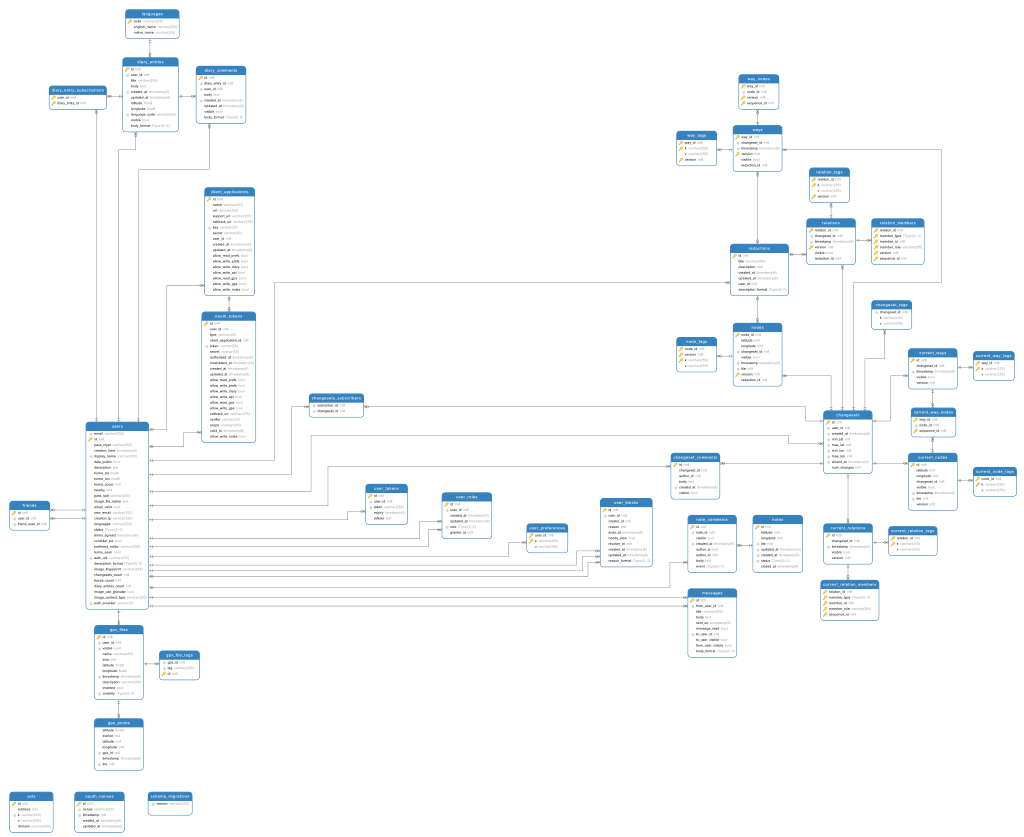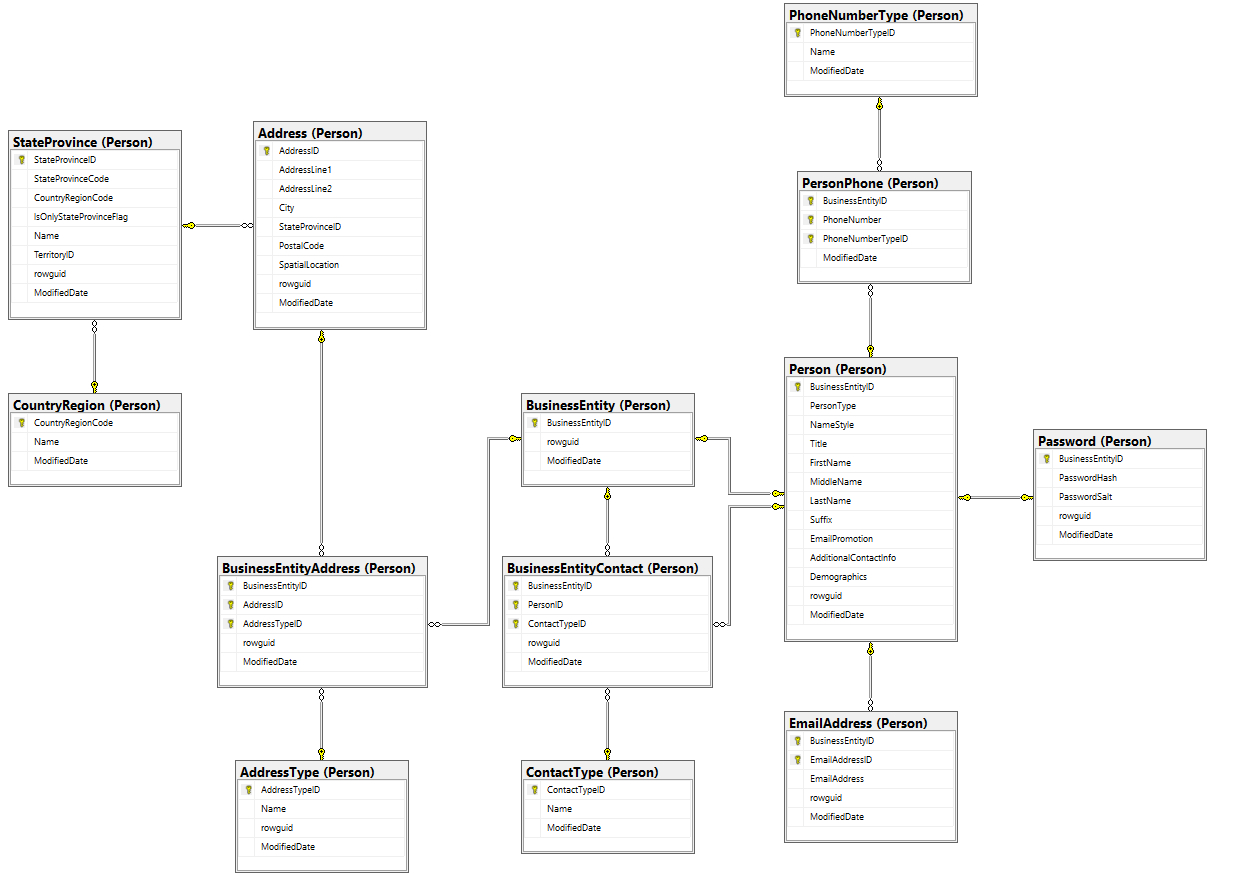

- #RAILS GENERATE DBSCHEMA DIAGRAM FROM SCHEMA.RB PDF#
- #RAILS GENERATE DBSCHEMA DIAGRAM FROM SCHEMA.RB UPDATE#
- #RAILS GENERATE DBSCHEMA DIAGRAM FROM SCHEMA.RB SOFTWARE#
- #RAILS GENERATE DBSCHEMA DIAGRAM FROM SCHEMA.RB CODE#
- #RAILS GENERATE DBSCHEMA DIAGRAM FROM SCHEMA.RB FREE#
Truth can be found in one place: the code. However, that has been already changed, and now db:migrate does not decide which file should be run based on that version anymore. If answers and replies in this question are correct, it seems like db:migrate used to assume that all migrations up to the version in schema.rb are applied, and will not run new migration files with older version. db:migrate will generate or modify it, but it should not affect how db:migrate run. It's just like what I see about schema.rb: just a file to store current table structure of your database.
#RAILS GENERATE DBSCHEMA DIAGRAM FROM SCHEMA.RB UPDATE#
Note that running the db:migrate command also invokes the db:schema:dump command, which will update your db/schema.rb file to match the structure of your database.
#RAILS GENERATE DBSCHEMA DIAGRAM FROM SCHEMA.RB SOFTWARE#
The software is available online, so it can be accessed from anywhere, enabling distributed teams to work on the database.
#RAILS GENERATE DBSCHEMA DIAGRAM FROM SCHEMA.RB CODE#
Old migrations may fail to apply correctly if those migrations use changing external dependencies or rely on application code which evolves separately from your migrations. SqlDBM supports the creation of database schemas through E R diagramming. It tends to be faster and less error prone to create a new instance of your application's database by loading the schema file via bin/rails db:schema:load than it is to replay the entire migration history. The first place to look is always the official guide.īy default, Rails generates db/schema.rb which attempts to capture the current state of your database schema. Now, out of curiosity, I want to look more into this matter. We didn't have much time to talk about it considering that it's not really important, so I just change the migration file name, run db:migrate again in my local to update the version and commit it.

However, as I understand rails db:migrate does not care about the version in schema.rb, it only compares the version list in db/migrate folder and version list in schema_migrations table, and run any migration that has not been run. My colleage insists that anytime you commit a new migration file, the schema.rb version needs to be updated too, or rails db:migrate will not run that migration file in other environments.

In my feature branch, I added a migration file with version older than the latest version in main branch, so when I run db:migrate, the version in schema.rb is not updated. Huy Nguyenĭata Engineer turned Product writes SQL for a living.This week, I had an argument (a healthy one 😗) at work about the version in Rails' schema.rb. Active record will update your db/schema.rb file to match up-to-date. Join 15k+ people to get insights from BI practitioners around the globe. Each migration modifies database by adding or removing tables, columnns or entries. If you want to give it a try, go to dbdiagram.io and upload your schema.rb to see how your rails erd diagram look.
#RAILS GENERATE DBSCHEMA DIAGRAM FROM SCHEMA.RB PDF#
#RAILS GENERATE DBSCHEMA DIAGRAM FROM SCHEMA.RB FREE#
Since we launched dbdiagram.io, a free and simple tool to draw entity relationship diagram 4 weeks back, we've been getting tons of feedback. But what if you want to generate an entity-relationship diagram (ERD) of your Rails app to quickly get a sense of how they look? Having a diagram that describes your models is perfect documentation for your application. The diagram gives an overview of how your models are related. Do all appropriate 'bundle install' commands as needed for your app. Copy your schema.rb file to the fixer app.

Simply pass the database key to the command line bin/rails generate scaffold Dog name:string -database animals A class with the database name and Record will be created. Copy your database.yml config to the fixer app. If you are using Rails generators, the scaffold and model generators will create the abstract class for you. Rails comes with a schema.rb file that contains a clear definition of your database tables and how they're linked together. Rails ERD is a gem that allows you to easily generate a diagram based on your applications Active Record models. Create a new rails app: rails new (app)-fixer Copy your gemfile (unless there are specific exceptions) to the fixer app.


 0 kommentar(er)
0 kommentar(er)
